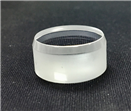

Time:2024-03-20
sapphire crystalIt is a gemstone composed of aluminum and alumina, which has become a shining star in the field of optical technology due to its stable and reliable performance. Known for its unique optical and physical properties, it not only has the ability to transmit light, but also has excellent resistance to high temperatures and corrosion. The unique combination of sapphire makes it a material for manufacturing high-quality lenses, which can perform well in harsh environments such as high temperatures and corrosion. This makes it an ideal choice for many applications, especially in fields that require resistance to harsh environmental challenges.
1. High temperature resistance
Sapphire glass can maintain its structure and optical properties in high temperature environments, making it an ideal material for combustion chambers, high-temperature laboratories, aerospace, and other fields. Under high temperature conditions, sapphire windows will not deform or fade, and can maintain stable operation and accurate measurement of the optical system.

2. Corrosion resistance
Due to its chemical composition and structure, sapphire can resist corrosive substances such as acid and alkali. This makes it an important optical component in fields such as chemical industry and biomedicine. Sapphire windows can withstand corrosive environments for a long time and maintain clear visibility.
Sapphire glass is an aluminate mineral whose crystal structure and chemical composition make it a transparent gemstone. Not only does it have excellent properties such as high temperature resistance and corrosion resistance, but its stability and durability give the optical system a longer and more reliable service life. It is also widely favored due to its high transparency, high hardness, scratch resistance, and wear resistance, which make it widely used in fields such as laser systems, high-pressure research, chemical reactors, optical sensors, etc. Usually, these windows are designed to be transparent and allow specific wavelengths of light to pass through to meet specific technical requirements.
藍(lán)寶石火焰探測(cè)器圖片.jpg)





Tel
Mobile phone
Customer service
TOP